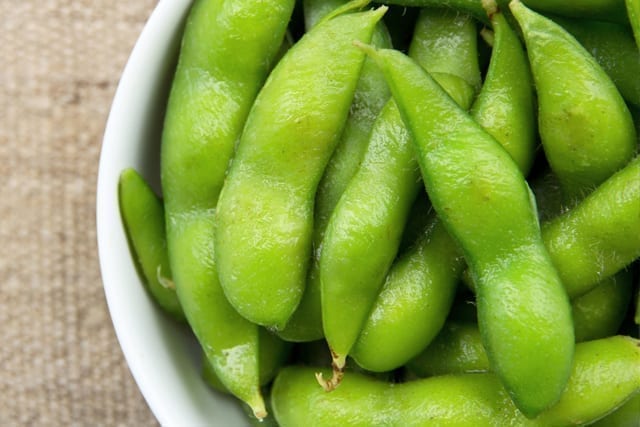Soy-crazed? You may not even realize how much you’re munching on soybeans. They show up in many forms, from sweet-and-green edamame to dried nuts. They’re even used as dairy substitutes for food such as cheese and yogurt, thanks to soy milk—soaked soybeans that are finely ground and strained. Then there’s tempeh (fermented soybean) and the all-popular tofu (soybean curd).A common fear that we hear all the time is from women who think that eating soy will lead to breast cancer. Soy products contain a lot of different phytoestrogens, chemicals from plants that can mimic some of the effects of the hormone class of estrogens—you even produce different ones including estradiol. (That’s why some hormones are called bioidentical when they contain the same structure as human estradiol.)QUIZ: Are You Eating for Health & Beauty?In the lab, researchers find that some specific phytoestrogens stimulate specific growth of specific breast cancer cells. You have probably noticed the use of the word “specific”—which stresses that few of the many estrogens seem to cause this growth. That is why we say that studies of soy consumption in humans present a whole different story.In fact, a 2009 study found that Asian women who ate more than 15 grams of soy protein daily actually had a lower risk of breast cancer than those who ate less than 5 grams. You see, if an estrogen doesn’t stimulate a specific receptor (such as one that causes breast cancer cells to grow), it may block that receptor or interfere with native estrogens stimulating that receptor. The net effect could just be inhibition breast cancer cell growth. At least that’s how we interpreted this major Japanese study.MORE: Build A Breast Cancer-Fighting MenuBut still, many aren’t convinced that tofu is safe (or healthy, even). Researchers noted that the “lightly-processed whole food” that Asian women consume differs from the soy pattern or types consumed in other countries. Think of those soy bars and chips, plus well-marketed meat substitutes such as ultra-processed soy burgers. (It seems each soy field planted produces over 100 specific phytoestrogens on average per field—and those phystoestrogens differ based on amount of water, amount and type of fertilizer, etc.).Yet another—the most recent study suggests that soy shouldn’t be a health concern for American women, either.Of nearly 10,000 women who survived breast cancer (many in the U.S.), those who ate the most soy were least likely to get cancer again or die from the disease. Which is again, the opposite outcome that skeptics expected.RESEARCH: Fight Wrinkles With SoyOddly enough, other research show beauty benefits of soy when it comes to young-looking skin. Women who took 40 mg of isoflavones (estrogen-like chemicals in soy) each day showed better skin elasticity and fewer crow’s feet.So soy may be far from detrimental, but no food may be a miracle food, either (except maybe salmon!).Be mindful of how your soy is processed and prepared. Deep-fried tofu is never going to gain health-food status, unless it is deep fried in a specific fat we will tell you about later—that’s another story. So for now, enjoy your soy in abundance with abandon, like no cell is watching!
© YouBeauty 2024




































